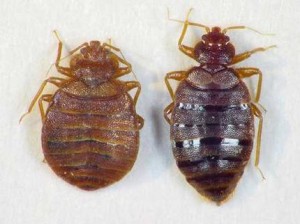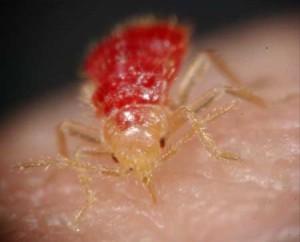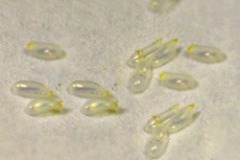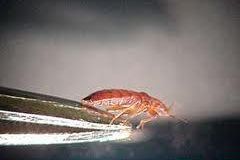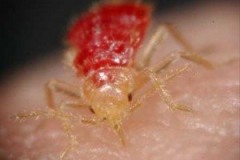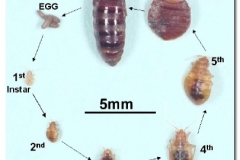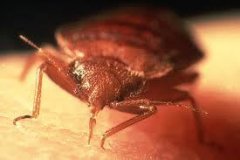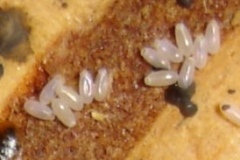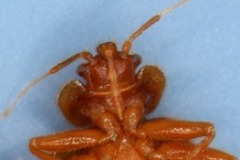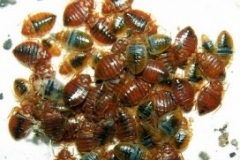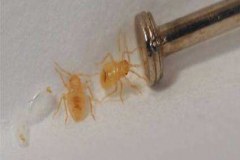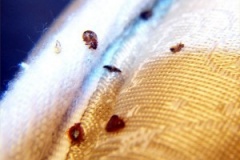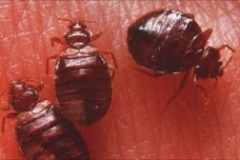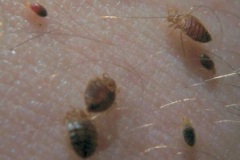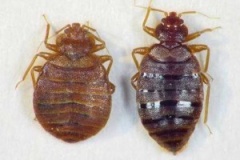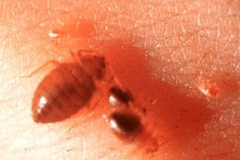The Bed Bug Life Cycle goes through 5 stages: First, they are eggs. After hatching, they begin to search for a mammal to feed on. From the time they hatch to the point of adulthood, they are considered nymphs, and will continue to molt their skins as they grow bigger with each meal. Bed Bugs tend to live about 10 months when they feed regularly, every night. Surprisingly though, they can live for up to a year without frequent feeding, making them that much more difficult to exterminate. In order to know what to look for when determining where bed bug infestations are, get to know the bed bug life cycle and recognize what needs to be swept up and scrubbed in preparation for a bed bug specialist.
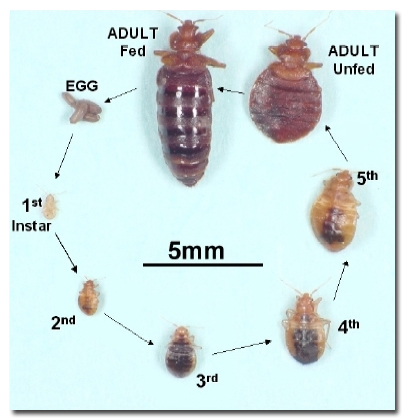
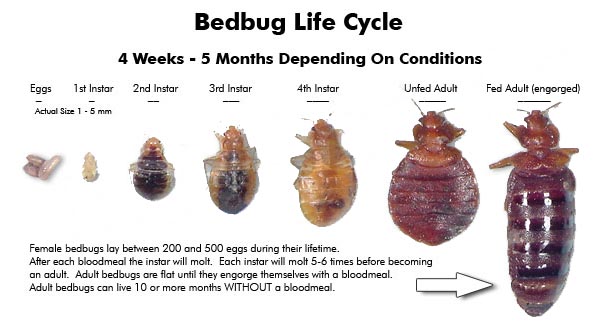
How to Identify bed bugs in your home
Bed Bugs start out as tiny pearly-white eggs that can be almost invisible to the naked eye. Each individual egg is about the size of a dust speck, so using a magnifying glass is handy. These little eggs tend to be only 1mm in length, and are attached to surfaces such as furniture and bedding in a "bed bug goo", so scrubbing them off with a rag or brush is necessary to completely remove them.
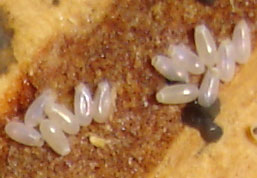
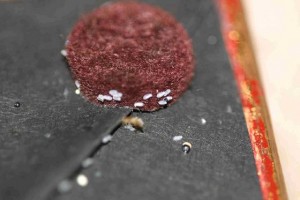
Immature bed bugs go through 5 developmental stages before reaching adulthood. In this time of their lives, they are known as nymphs. With each stage they will grow larger and become darker. Immature bed bugs are still about 1mm in length, and still just as clear as eggs, so they are often not easily visible.
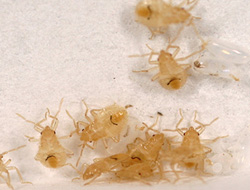
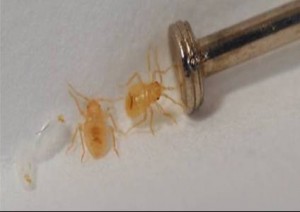
Adults are small and brownish, just under a 1/4” long and are flat. They are almost as wide as they are long, with a distinct oval shape. Immature bed bugs, known as nymphs, are much smaller and much lighter than full grown adults. New-born nymphs are translucent and the same size as bed bug eggs(1 mm). After feeding on blood, immature bed bugs will become bright red. You can see the blood inside of them. Bed bugs do not have wings and cannot fly, but they can move quickly walking on almost any surface.
